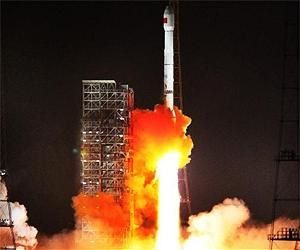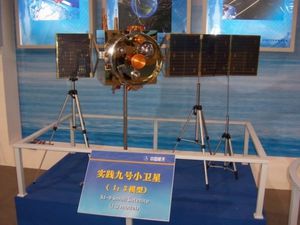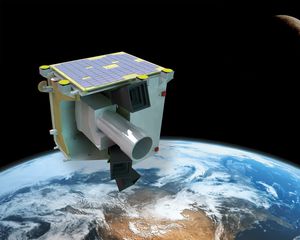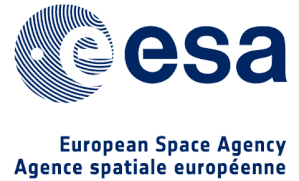
October 16, 2012 China Military News
2012-10-16 — (by Bill Gertz) China’s military is set to conduct a test of a new and more capable anti-satellite missile that United States intelligence agencies say can knock out strategic satellites in high-earth orbit, according to U.S. officials.
However, a recent intelligence assessment said the test of the Dong Neng-2 direct ascent anti-satellite (ASAT) weapon is being delayed in an apparent effort to avoid upsetting President Barack Obama’s reelection bid, said officials who spoke on condition of anonymity.
Intelligence reports from September and this month revealed China will test fire the new DN-2 missile from a ground base sometime in early to mid November.
The missile is described by intelligence agencies as a high-earth orbit interceptor designed to destroy satellites by ramming them at high speeds. The intelligence reports called the new missile a strategically significant counterspace weapon, said the officials familiar with the reports.
Testing a high-earth orbit anti-satellite missile would represent a major advance in China’s satellite-killing capability, which has been underway for more than a decade. High-earth orbit, also known as geosynchronous orbit, is the location of major communications and navigation satellites, which orbit at a distance of between 12,000 miles and 22,236 miles from earth.
China’s last ASAT test in 2007 destroyed a low-earth orbit weather satellite about 558 miles in space, causing an orbiting debris field of tens of thousands of pieces of metal that U.S. officials say will threaten orbiting satellites and human space travelers for 100 years.
U.S. officials said it is unlikely China will conduct an impact test of a kinetic kill vehicle against an aging weather satellite as occurred in 2007, although the possibility of a second, major debris-causing test cannot be ruled out.
Instead, officials said the test most likely will be a demonstration of a precision-guided direct ascent missile flying out tens of thousands of miles.
“If the United States loses the strategic high ground of high-earth orbit [from a Chinese high-altitude ASAT missile], we are in real trouble,” said one U.S. official.
U.S. Global Positioning System satellites, used for both navigation and precision missile guidance, are located in medium-earth orbit, or about 12,000 miles, and thus would be vulnerable to the new DN-2.
Whether or not the test is successful, development of the new high-altitude DN-2 ASAT reveals that China’s military is planning for future high-orbit space warfare despite seeking international agreements banning weapons in space.
China’s January 2007 ASAT test drew protests from the United States and other spacefaring nations, who saw it as a major threat to satellites used for both military and civilian purposes. That test also produced tens of thousands of pieces of space debris which threaten satellites.
A second possibility is the DN-2 missile test will be fired against a target missile, as occurred in 2010 as part of a joint Chinese ASAT-missile defense test.
Pentagon spokesmen declined to comment on the DN-2 ASAT program.
Michael Pillsbury, a former Reagan administration defense policymaker, stated in a 2007 report to Congress that Chinese military writers advocated covert deployment of sophisticated anti-satellite weapons system like the kind now being developed by the People’s Liberation Army for use against the United States “in a surprise manner without warning.”
“Even a small scale anti-satellite attack in a crisis against 50 U.S. satellites—assuming a mix of targeted military reconnaissance, navigation satellites, and communication satellites—could have a catastrophic effect not only on U.S. military forces, but on the U.S. civilian economy,” said Pillsbury, currently with the Hudson Institute. Chinese military writings also have discussed attacks on GPS satellites that are located in high-earth orbit, he stated.
ASAT a top-secret program
China’s anti-satellite missile system is a key element of the communist state’s growing arsenal of asymmetric warfare weapons, and remains one of Beijing’s most closely guarded military secrets.
Defense officials have said that with as few as 24 ASAT missiles, China could severely weaken U.S. military operations by disrupting global communications and military logistics, as well as by limiting celestial navigation systems used by high-technology weapons. Such an attack also would severely degrade U.S. intelligence gathering efforts against global targets, a key strategic military advantage.
A U.S. official familiar with reports of the ASAT test said China’s delay in conducting the test until after the Nov. 6 election is a sign Beijing wants to help President Obama’s reelection campaign. “It implies they’d rather have him reelected,” said the official.
The Obama administration has adopted conciliatory policies toward China’s military buildup and its large-scale human rights abuses. Critics say the administration also failed to hold Beijing accountable for its unfair trade practices and currency manipulation.
The administration’s questionable policies were revealed by a 2009 State Department cable that quoted Secretary of State Hillary Clinton as saying, “How do you deal toughly with your banker?”—a reference to China’s potentially coercive leverage over the United States through its large holdings of U.S. debt securities.
Richard Fisher, a Chinese military affairs specialist, said little is known publicly of the DN-2 missile. However, the DN-2 may be China’s designation for an ASAT missile and kill vehicle combination mounted on launchers dubbed KT-2, or KT-2A. This ASAT weapon is based on DF-31 or DF-31A road-mobile intercontinental ballistic missiles, respectively.
“ASATs derived from the KT-2 and KT-2A space launch vehicles have the potential to reach high earth orbits used by many strategic U.S. surveillance, communication, and navigation satellites,” said Fisher, with the International Assessment and Strategy Center.
Fisher said in 2002, during a military show in China, the KT-2A was touted by Chinese officials as having a 2,000-kilogram payload that could reach high-earth orbits.
“Since its appearance a decade ago, the KT series of space launch vehicles presaged what we now know, that a key Chinese strategic goal has been to deny outer space as a sanctuary to support American military operations,” Fisher said.
A KT-1 microsatellite launcher was displayed at the Zhuhai air show in 2000, and “it was fairly obvious that this could become the basis for an ASAT, and it was used as the basis for the SC-19 ASAT demonstrated successfully in January 2007,” Fisher said.
Because China will not join a verifiable space control agreement, “Washington has little choice, if it is to continue to deter China militarily, but to build far greater redundancy, passive and active defenses for outer space,” he said.
China ASAT caused space debris
U.S. officials estimate that China’s 2007 ASAT test that destroyed an aging weather satellite in low-earth orbit now accounts for 45 percent of all space debris in low-earth orbit.
After a year of stonewalling by China on the test, an official U.S. demarche, or protest note, was sent to Beijing in January 2008. According to a copy of the note made public by Wikileaks, the protest warned the Chinese government, “Any purposeful interference with U.S. space systems will be interpreted by the United States as an infringement of its rights and considered an escalation in a crisis or conflict.”
“The United States reserves the right, consistent with the [United Nations] Charter and international law, to defend and protect its space systems with a wide range of options, from diplomatic to military,” stated the protest, made by then-U.S. Ambassador to China Clark Randt.
A joint State Department-Pentagon report to Congress on export controls made public in April states that China is “developing space-based methods to counter ballistic missile defenses of the United States and our allies, including anti-satellite (ASAT) weapons.”
“As China advances in operational space capabilities, it is actively focusing on how to destroy, disrupt, or deny U.S. access to our own space assets,” the report said.
China is developing and refining its ASAT weapons as part of a “multi-dimensional program to limit or prevent the use of space-based assets by potential adversaries during times of conflict,” the report said.
“In addition to the direct-ascent [missile] ASAT program, China is developing other technologies and concepts for kinetic and directed energy for ASAT missions,” including electronic jamming of satellite communications and lasers that disrupt satellites, the report said.
ASAT weapons “have significant implications for anti-access/area-denial efforts against the United States in Taiwan Strait contingencies,” the report said. Those weapons and capabilities are being developed by China as a means to force the U.S. military out of Asian waters and territory and make it more difficult for U.S. forces to get into the region during a conflict, such as a defense of Taiwan. Other anti-access area denial weapons include anti-ship ballistic missiles, cyber warfare capabilities, and submarines.
Defense Intelligence Agency director Lt. Gen. Ronald L. Burgess told Congress in February that “China successfully tested a direct ascent anti-satellite weapon (ASAT) missile and is developing jammers and directed-energy weapons for ASAT missions.”
Burgess said that as “a prerequisite for ASAT attacks, China’s ability to track and identify satellites is enhanced by technologies from China’s manned and lunar programs as well as technologies and methods developed to detect and track space debris.”
Another ASAT test by China will likely undermine the Obama administration’s controversial space arms control proposal, introduced in January. Many in the Pentagon oppose the International Code of Conduct for Outer Space Activities over concerns it would place limits on U.S. space capabilities.
U.S. lagging in counterspace
Despite China’s continuing development of space weapons, the administration has done no research or development into so-called counterspace weapons and other capabilities that could deter China from its ASAT and anti-satellite laser and jammer arms, according to military officials. The opposition is based on the administration’s preference for arms control negotiations and agreements as a major element of its U.S. national security policies, the officials said.
Frank Rose, deputy assistant secretary of state for arms control, said in a speech in April that the space code of conduct would include legally nonbinding “transparency and confidence-building measures.”
However, a Pentagon Joint Staff assessment of the space code of conduct concluded that U.S. adherence to the code’s provisions would hurt U.S. space operations in several areas.
The Pentagon’s National Security Space Strategy from 2011 makes little mention of counterspace weapons. It states that U.S. policy is “to dissuade and deter” others from developing space weapons, without providing specifics.
The Pentagon indirectly demonstrated an ASAT capability in 2008 when it used a modified ship-based SM-3 anti-missile interceptor to shoot down a falling, low-earth orbit spy satellite that was considered a danger because its fuel tank might have passed through the atmosphere and landed on earth.
Cables detail PRC’s first ASAT test
According to a classified Jan. 12, 2010, State Department cable made public by Wikileaks, China conducted its most recent ASAT test on Jan. 11 of that year.
According to the cable, an ASAT missile designated SC-19 was fired from China’s Korla Missile Test Complex and successfully intercepted a CSS-X-11 medium-range ballistic missile launched from the Shuangchengzi Space and Missile Center.
The two missiles were tracked by U.S. missile warning satellites to an intercept point at an altitude of about 155 miles in space.
Until then, the SC-19 had been used previously to boost China’s first successful direct-ascent anti-satellite intercept on Jan. 11, 2007, when a missile rammed into China’s FY-1C weather satellite.
“Previous SC-19 DA-ASAT flight-tests were conducted in 2005 and 2006,” the 2010 cable said. “This test is assessed to have furthered both Chinese ASAT and ballistic missile defense [BMD] technologies.”
The cable contained a U.S. protest note to China on the 2010 test seeking an explanation for Chinese officials about the purpose of the test and “what steps were taken to minimize the creation of orbital debris.”
The cable said that since the 2007 ASAT test, the United States had urged China not to conduct further space weapons tests.
An earlier cable revealed that U.S. intelligence agencies had advance word of the 2010 space weapons test, and noted that China was not expected to provide notification in advance of the test, which proved accurate.
Other State Department cables revealed conflicting statements from Chinese officials on whether China planned to conduct future ASAT tests. Chinese Foreign Ministry official He Yafei unequivocally stated to U.S. officials in June 2008 that China would not conduct future ASAT tests. In July, China Lt. Gen. Zhang Qinsheng said there were no plans for an ASAT test in the near future.
























